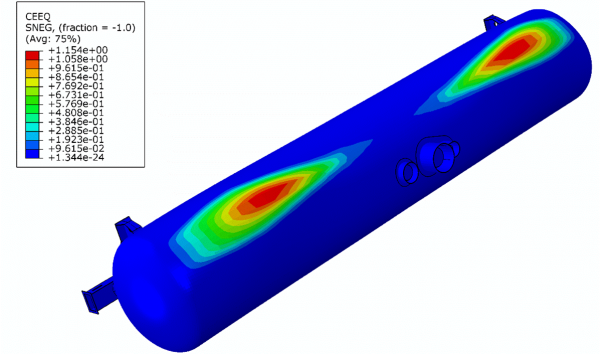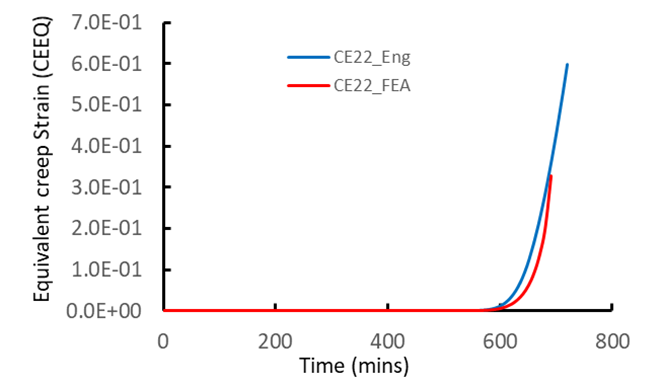Summary
This work updated and validated two (2) new rail tank car fire models and compared the results of thirty-four scenarios from those two (2) models to an industry model to determine the similarities and differences in the results.
Background
An incident involving a rail tank car transporting flammable liquids such as crude oil, natural-gas condensates, or ethanol creates the potential for a pool fire. Transport Canada’s Transportation of Dangerous Goods directorate (TDG) is concerned about this because of rail incidents in which flammable liquids have been involved. This presents a safety risk to the public and the environment. TDG would like to better understand the fire performance of rail tank cars to evaluate the applicable safety standards and regulations and to ensure that they provide a high level of safety.
To investigate these concerns, TDG initiated research projects into tank car failure at high temperature. From 2016 to 2019, Natural Resources Canada (NRCan) CanmetMATERIALS (CMAT) conducted tensile and creep-rupture tests on TC128B and ASTM 516 Grade 70 steels, two (2) of the most common steels used in rail tank car manufacturing. During fiscal year (FY) 2018/19, a material model that includes temperature-driven (25 °C to 800 °C) material softening and creep was implemented in finite element (FE) analysis software to enable detailed analysis of tank cars and tank car failures at high temperatures. CMAT then developed an FE model using specific rail tank car geometry to predict tank car failure under various pool fire conditions in FYs 2018/19 and 2019/20. [1]
Objectives
The project had three (3) main objectives for FY 2020/21. These were to:
- develop a simpler and faster engineering model for calculating material failure and validate it against the existing FE model
- run a series of pool fire scenarios using the engineering and FE models with crude oil temperature and pressure data from NRCan CanmetENERGY as inputs
- complete a comparison between the Analysis of Fire Effects on Tank Cars (AFFTAC), an established industry software program for predicting tank car failure in pool fires, and both of CMAT’s models
Methods
Thirty-four (34) simulated fire scenarios were defined by TC and analysed by CanmetENERGY to produce temperature and pressure boundary conditions for input into the CMAT models. The scenarios had fire temperatures from 850 °C to 1204 °C, and varied tank orientation (Figure 1 ), fill level, pressure relief valve (PRV) release pressure, crude oil lading type, shell thickness, and emissivity. All cases except one (1) had thermal protection in place and one (1) case was also run with a completely blocked PRV.
Results
CMAT successfully developed an engineering approach for calculating the plastic strain, creep strain, and failure time in a rail tank car shell in an engulfing pool fire scenario. The only required inputs are the peak tank wall temperature and internal pressure as functions of time.
The engineering model was found to accurately predict deformation in terms of creep strain and time to failure when compared to full scale FE simulations (Figure 2).
Only the bare shell and fully-blocked PRV cases resulted in tank failure within the 716 minutes simulation run time. The FE and engineering models predicted a failure time of 675 and 676 minutes for the bare shell case, respectively. The tank in the case with a fully-blocked PRV valve failed after 328 minutes in the FE simulation and after 340 minutes in the engineering model.
The scenarios were also run on the program AFFTAC which did not predict failure in any of the cases. All cases passed the test requirements of TP18477 by surviving at least 100 minutes in all three (3) models. The highest fire temperature case, 1204 °C, was equivalent to the torch fire temperature of TP18477. It is therefore reasonable to assume a localized hot spot at this temperature would also be survived.
AFFTAC and CMAT’s two (2) models describe the high temperature behaviour of tank car materials. All three (3) can predict two (2) failure modes: yield (plasticity) and creep. All three (3) models are temperature dependent. As the temperature increases the yield stress decreases. At higher temperatures creep deformation occurs more rapidly at a given stress level than at lower temperatures. The fire scenarios modelled did not provide sufficient data for fully comparing CMAT’s models with AFFTAC, as the low creep accumulation and few failures during the simulation time didn’t result in adequate differences for analysis.
Conclusions
CMAT developed an effective and time efficient engineering method for calculating the time to failure of a tank car in a pool fire scenario and validated it against their FE model.
CMAT simulated 34 realistic pool fire scenarios in both their FE and engineering models. All cases survived at least 100 minutes. Only two (2) cases resulted in failure within the 716 minutes run time. One (1) failed due to a blocked PRV and one (1) failed because it lacked thermal protection. These results demonstrate the importance of these key rail tank car safety systems.
Preliminary comparisons between CMAT’s models and AFFTAC demonstrated some differences.
Future action
Additional comparisons between CMAT’s two (2) models and AFFTAC could be performed when a new AFFTAC version is released to the public, to ensure confidence in the fire survivability of new tank car designs
References
[1] J. McKinley, B. W. Williams (2020). Finite Element Simulation of Rail Tank Car Creep Failure in an Engulfing Fire Scenario. CanmetMATERIALS, Natural Resources Canada.
Title: Tank Car Fire Failure Assessment using Combined Models (2021)
Authors: J. McKinley, J. Xue, B. W. Williams, S. Xu (CanmetMATERIALS, Natural Resources Canada)
TP Number: TP 15493E
ISBN Number: 978-0-660-40379-3
Catalogue Number: T44-3/24-2021E-PDF
Acknowledgements
This project was funded by Transport Canada and conducted by Natural Resources Canada.
Contact us
To obtain a copy of the report, please contact:
TDG Scientific Research Division
TC.TDGScientificResearch-RecherchescientifiqueTMD.TC@tc.gc.ca
Keywords
TC128B, A516-70, Rail Tank Car, TC-117, Creep, Fire, Finite element (FE) Modelling, Flammable lading, Crude Oil, Pool fire, Fire performance.

